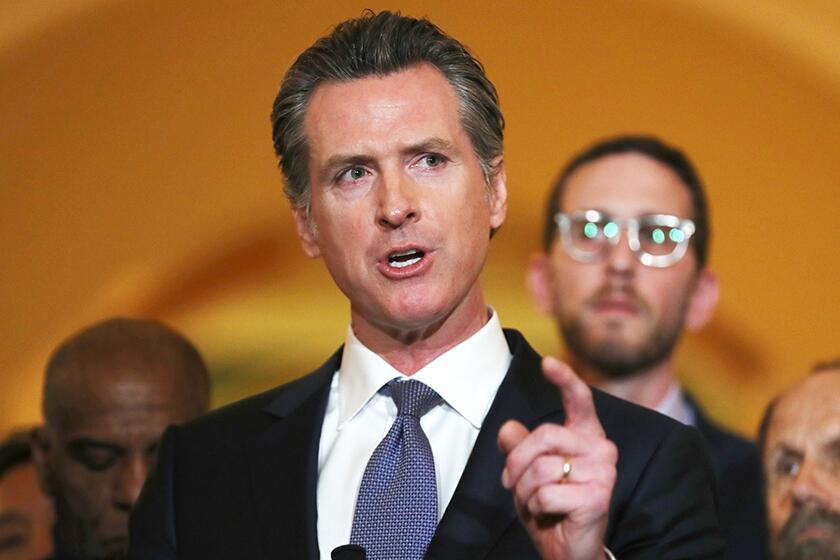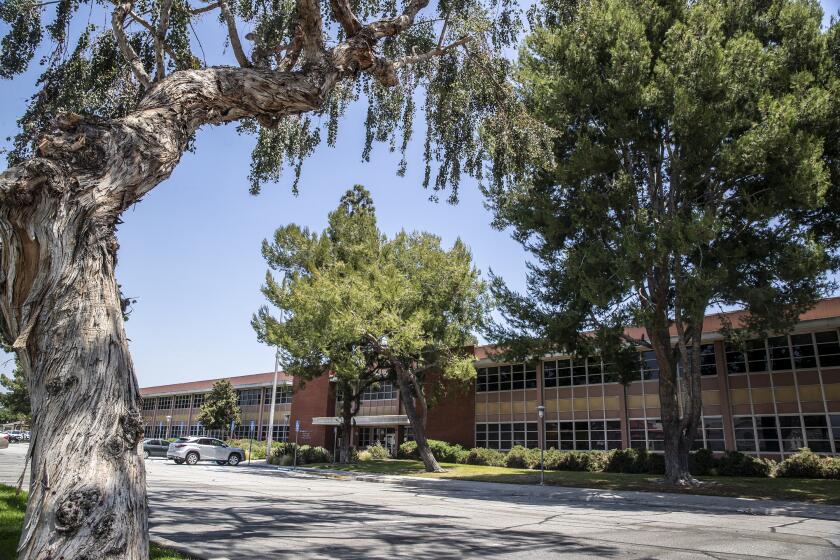LAPD seeks state probe of police shooting suspect’s parole status
- Share via
The Los Angeles Police Department has asked the state Department of Corrections and Rehabilitation to investigate how a parolee who fired nearly a dozen gunshots at two LAPD officers in the San Fernando Valley was able to gain early release and classification as a low-level offender.
Javier Joseph Rueda, 28, of Panorama City was placed on “non-revocable parole” in May after serving two years of a 10-year prison sentence. On July 10, police said, he opened fire on two officers who had been pursuing him on suspicion of drunk driving. The officers — including one who was shot in the lower arm — returned fire, fatally wounding Rueda.
State records show that Rueda, who police described as a Vineland Boyz gang member, was classified as a “low-level, non-violent” parolee” and therefore was not being monitored by parole agents with the corrections department.
“If you determine that there were issues regarding Mr. Rueda’s status, we would appreciate your feedback on how we can work with you to ensure that incidents of a similar nature do not occur,” LAPD Chief Charlie Beck wrote.
Paul M. Weber, head of the union that represents almost 10,000 LAPD officers, was far more critical.
“We have repeatedly warned for months that it’s only a matter of time before the Department of Corrections’ ‘non-revocable’ parole policy — which pushes prisoners back onto the streets and prevents their return to prison — enables a parolee to kill a police officer or an innocent member of our community,” Weber said. “It was only by the sheer grace of God that these officers were not killed by this parolee, who still should have been in prison.”
State corrections spokesman Oscar Hidalgo said that that even if Rueda had been on supervised parole, it might not have prevented the incident.
“Supervised parole is not incarceration,” Hidalgo said.
In recent months, police officials have said that more attention needs to be placed on how parolees are monitored. The law has long required different levels of monitoring for those released from state prison, with violent offenders subject to more rigorous checks, including more frequent visits with their parole agents.
A law that went into effect this year aimed to cut the state inmate population by about 6,500. The reductions, targeting low-level offenders, are achieved in part through good-behavior credits and by revising parole rules to stop police agencies from returning nonviolent offenders to prison for minor parole violations.
State parole officials contend that the changes in the law allow their agents to concentrate on the most dangerous offenders. They say the average caseload for each parole agent statewide before the law passed was 70 parolees and that when the law is fully implemented, the number will drop to 48.
More to Read
Sign up for Essential California
The most important California stories and recommendations in your inbox every morning.
You may occasionally receive promotional content from the Los Angeles Times.










